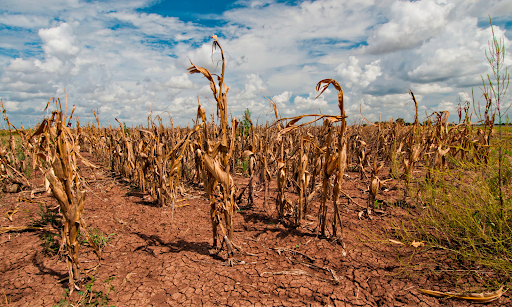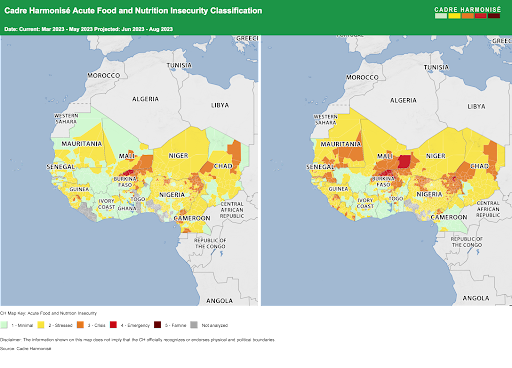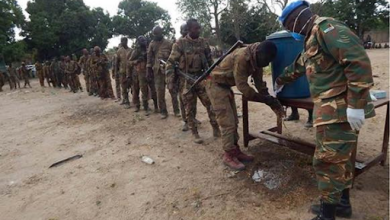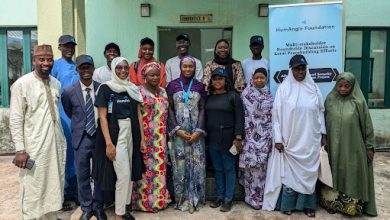Nigeria Among Countries “A Step Away From Famine” This Year, Say Experts
The combined effects of conflict, climate shocks, COVID-19, and high food prices continue to drive up hunger and malnutrition. Hunger will spread in Nigeria’s northern regions.

West and Central Africa could be “one step away” from famine, the United Nations has said, and analysts are forecasting Nigeria will not be spared.
Countries in the Sahel region, particularly Burkina Faso and Mali are particularly at risk, the UN says.
But HumAngle can report that communities in Nigeria’s northern regions will also find themselves in dire need this year.
A new map drawn by analysts studying how famines are caused, shows a growing area of Nigeria’s northern regions that will experience extreme hunger in just a few months’ time.
People are at risk of starving wherever the production of food has been interrupted by conflict, in addition to ecological and economic difficulties, the World Food Programme said in a statement.
The number of people who do not have access to nutritious food in the wider African region is projected to reach 48 million during the lean season that lasts from June to Aug 2023.
The lean season is the period of the year when food stocks are used up, and food prices skyrocket.
16.5 million children under five years of age are set to face acute malnutrition, according to a recently published Cadre Harmonise Food Security Analysis –a tool that provides data on food and nutrition outcomes.
“Despite improved rainfall in 2022, the access to and availability of food remain of major concern,” the UN joint statement notes. “The region remains net import dependent, and currency depreciation and high inflation are causing food import bills in the region to rise, even as countries struggle with major fiscal constraints and macroeconomic challenges.”
Lean season
In January, Humangle reported how an estimated 9 million people living in conflict-affected areas of the Northeast and Northwest zones became at risk of hunger in the upcoming lean season.
According to the United Nations’ Children Fund (UNICEF), the ongoing conflict, climate change, and rising food prices have been identified as the key drivers of this “alarming trend.”

Last year, projections from the Cadre Harmonise analysis stated that over 1.4 million people were at risk of acute food insecurity in Borno, Adamawa, and Yobe (BAY) states where the insurgency has led to deaths and displacements.
By the end of 2022, nearly 3 million more people in the BAY states were said to have been hit by acute levels of food insecurity which was worsened by the flooding disasters during the rainy season that lasted from June to Oct. 2022.
The National Emergency Management Agency (NEMA) noted that the widespread flooding damaged over 70,000 hectares of farmlands, reducing yearly harvests and increasing the risk of food insecurity for families across the country.
In the northwestern states of Katsina, Zamfara, and Sokoto, the figure of people who went hungry went from 2.9 million to 4.3 million people. Armed violence by terror groups and kidnapping have exacerbated the situation in the region.
Other states such as Benue and Niger in the north-central zone are also predicted to face high levels of food insecurity.
Access to food for a majority of the population remains a problem, Robert Guei, the sub-regional coordinator for Food and Agriculture Organization (FAO) in West Africa notes. “The continued deterioration of the food and nutrition situation in West Africa and the Sahel is unacceptable,” he says.
FAO, UNICEF, as well as the United Nations Office for the Coordination of Humanitarian Affairs (UN OCHA) and World Food Programme (WFP) is urging development and humanitarian partners to strengthen food security in the region.
“This includes building food, health, water, sanitation and hygiene systems, and nutrition-sensitive social protection programmes that target vulnerable groups such as women and young children.
“Partnerships need to be enhanced to prevent and treat acute malnutrition among children and promote climate-smart programmes that help to reduce the region’s high vulnerability to climate shocks, and the risk of natural resource depletion.”
Support Our Journalism
There are millions of ordinary people affected by conflict in Africa whose stories are missing in the mainstream media. HumAngle is determined to tell those challenging and under-reported stories, hoping that the people impacted by these conflicts will find the safety and security they deserve.
To ensure that we continue to provide public service coverage, we have a small favour to ask you. We want you to be part of our journalistic endeavour by contributing a token to us.
Your donation will further promote a robust, free, and independent media.
Donate HereStay Closer To The Stories That Matter




